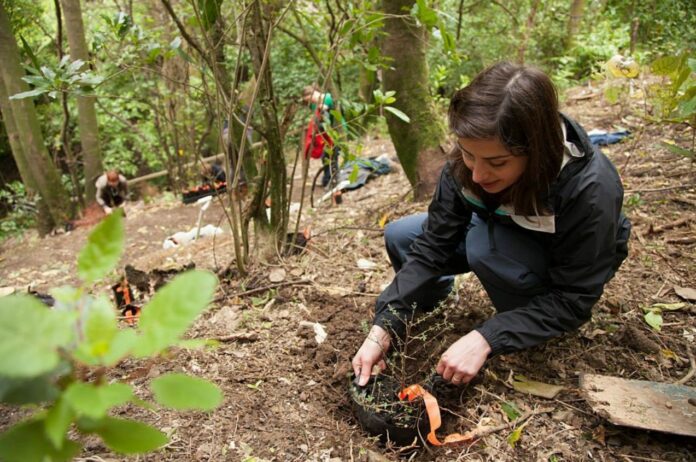New research has found that, on average, about half of the trees planted as part of efforts to restore tropical and subtropical forests die within five years. However, the results vary a lot.
The study looked at how many trees survived and how big they got at 176 restoration sites in tropical and subtropical Asia, where natural forests had been damaged.
The study indicated that after five years, nearly half of the saplings planted initially had died.
But survival rates were very different between sites and species. After five years, over 80% of trees at some sites were still alive, while at others, the same number had died.
The research was published in the Philosophical Transactions of the Royal Society B: Biological Sciences today.
Restoring forests is a powerful way to stop biodiversity loss and slow down climate change. This is because restoring forests locks away carbon and protects important habitats.
Carbon offsetting is also commonly employed in conjunction with reforestation initiatives.
Even while the quantity of trees that are first planted is the primary indicator used for many initiatives, research indicates that many of these trees are not long-lasting.
The high rates of survival at some sites demonstrate that restoration efforts can be successful with the correct strategy.
Southeast Asia is home to 15% of the world’s tropical forests, which are among the most species- and carbon-rich in the world and support tigers, monkeys, and elephants.
However, there has also been significant deforestation in the area recently; it is estimated that between 1990 and 2010, the region’s forest cover decreased by 32 million hectares.
Therefore, the region has become an important focal point for forest restoration initiatives.
The research, conducted by an international team of experts from 29 universities and research centres, is the first to examine the long-term effects of restoration initiatives using a massive database.
“The large variability in survival we found,” said co-lead author Dr Lindsay Banin from UK Center For Ecology & Hydrology, “across sites could be for a number of reasons, including planting densities, the choice of species, the site conditions, extreme weather events or differences in management and maintenance.
“Local socio-economic factors,” according to the author, “may also be important. What’s clear is that success is very site-dependent – we need to understand what works and why and share that information, so we can bring all sites up to the level of the most successful and harness the full potential for restoration.
“There’s likely no one-size-fits-all approach and restoration action should be tailored to local conditions. This will help ensure the scarce resources and land available to restoration are used to best effect.”
The team discovered that reforestation efforts were less successful in completely deforested areas than in places where some trees survived. The survival rate of saplings placed in locations with existing mature trees was approximately 20% higher. Greater protection and upkeep efforts may be required in more disturbed locations.
Some evidence were also found that active restoration works faster than just letting nature take its course. Sites that were planted with trees gained forest cover faster than those that were left to regenerate naturally. However, many more studies followed the fate of trees that had been planted than the structural characteristics of the entire block.
The research team thinks that combining both types of data in the same study regions will make it easier to identify acceptable mortality levels that will still result in the restoration of forest cover. More research is required to assist determine the best suitable and affordable restoration techniques for use at various sites and under various situations.
The UK’s University of Aberdeen’s Prof. David Burslem, a co-author, noted that the locations that have already been removed of trees are those where active restoration is most necessary and where there is a higher danger of tree mortality.
For restoration to be successful, “we need to understand better how to improve the survival chances of saplings on these sites, to ensure restoration has positive outcomes. But the study also provides a warning, to protect our remaining forests as much as possible, both because restoration outcomes are uncertain and to provide the diverse seed sources needed for restoration activities,” according to the professor.
Replanting will only be a solution to the excess carbon dioxide in the atmosphere if we can confirm that carbon is successfully drawn out of the atmosphere and locked away, and if we can quantify the amounts and timescales involved, according to co-author Prof. Robin Chazdon of the University of the Sunshine Coast in Queensland, Australia.
“This is why assessing restoration outcomes over the long-term, and gathering information that helps to maximise success rates, are so important. We need the focus to shift away from simply planting trees toward growing them and helping our forests thrive.”
Image Credit: Getty
You were reading: 10.1098/rstb.2021.0090
